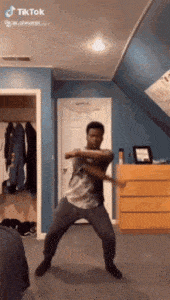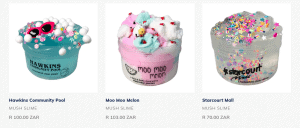A little bit of history
TikTok was first released in September 2016 under the name “Douyin.” It was made by the Chinese company ByteDance as a video-sharing social networking site like Facebook and Instagram (both of which are banned in China). ByteDance bought the social media app Musical.ly in November 2017. Musical.ly users (called “Musers”) can produce and share short lip-sync movies on the site that are 15 seconds or less in length. ByteDance discontinued the Musical.ly app in favor of Douyin, which has many of the same features. ByteDance launched TikTok, a worldwide version of Douyin, in August 2018. TikTok’s smart algorithm, which learns users’ preferences through their actions within the app, is a major selling point.
Evolving with Technology
In the year 2020, we were all quarantined for fear of contracting the COVID-19 virus. Even though most individuals were aware of TikTok’s existence, they were strongly against the idea of downloading the app to view lip-sync and dance videos. A month or two later, we all found ourselves humming Doja Cats’ new song after watching local perform the viral dance for the thousandth time. Perhaps you found yourself now making banana bread or that you had all the time in the world, so you started hitting those fitness goals by working out at home.

By the middle of 2021, things were starting to look up for the world, but TikTok was still around and had become the “go-to” resource for everything from discovering new restaurants and recipes to researching do-it-yourself projects and locating remote employment opportunities and side hustles.
But what really stands out is how small businesses have taken advantage of the platform to increase their brand awareness and sell their goods.
TikTok enabled local businesses to increase their brand awareness by creating engaging videos that caught the interest of the target audience and ultimately resulted in a sale. The first video that comes up when you search for the hashtag “South African business” is a woman making slime. Mushslime, a Cape Town-based company. About three years ago, Mushslime’s founder launched a YouTube channel that has now amassed 77,000 subscribers and a TikTok account with 124, 000 followers. When looking at the two tech platforms side by side, TikTok has had a greater influence on mushslime’s business journey and on the company’s 40 000 clients around the world.

Image: Mushslimes latest Stranger Things themed slime.
Tiktok is a “simple” platform developed and launched in China back in 2018 (we say simple because it seems simple to many), but it has become a tech application that enables small businesses right here in South Africa. The South African consumer was both delighted and inspired by the country’s small businesses. They showed us the value of being genuine when interacting with others and the power of engaging an enthusiastic crowd. In 2021, TikTok established itself as a platform for promoting popular companies and items among its users.
After TikTok for Business came out in the middle of 2021, many South African companies saw the platform as a place where art, business, and community could come together.
Technically, how does Tiktok make it all happen?
According to G2 Stack, TikTok makes use of 22 different technologies. These include HTML5, Google Analytics, and Google Fonts.
Other research shows that TikTok has used languages like C++, C, Python, Javscript, React, Angular, Java, Swift, Objective-C, Go, and R. For the software systems and technologies, they use: Hadoop, Spark, Flink, Druid, TensorFlow, and AWS.
TikTok is a fantastic example of how to use behavioural psychology and smart visual design to captivate your audience and keep them coming back for more. The app’s user interface (UI) is clean and easy to use. There are no extra buttons or menus, and the key controls are set up in a way that makes sense.
So maybe it’s not so simple after all.
In conclusion
Many people dismissed Tiktok as “simply another dancing and music app,” yet the revolutionary software ultimately helped many others launch profitable businesses. Consider this: how many more useful innovations can we expect from TikTok in the next five years? Or what other digital applications can help your business become successful, maybe even think of creating your own digital application? The most important question, however, is whether you will accept and welcome the new innovative technologies available to you. Or will you fall behind and miss the chance for your business to go viral?